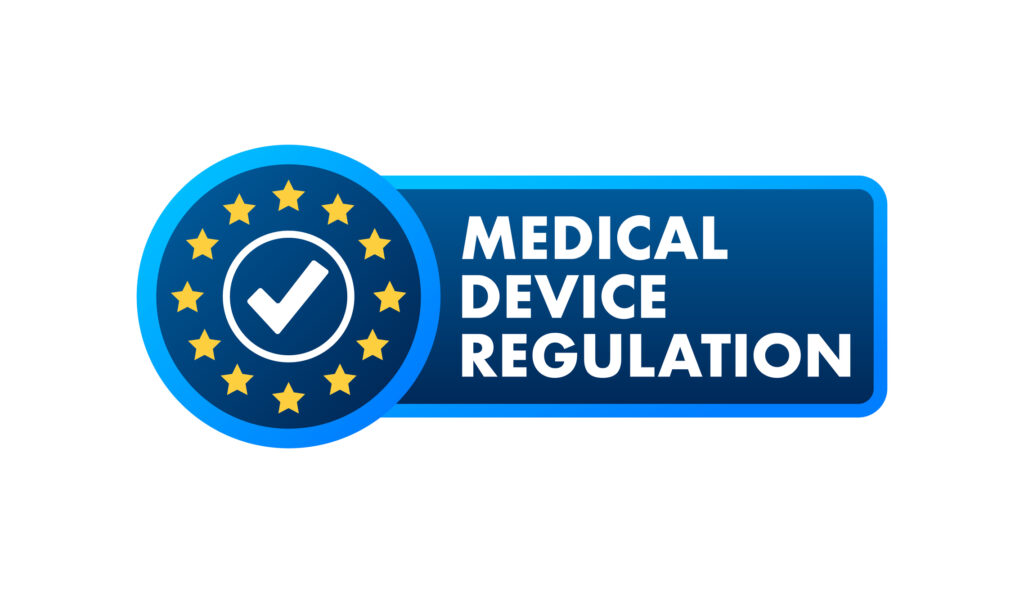The International Council for Harmonisation of Technical Requirements for Pharmaceuticals for Human Use (ICH) plays a significant role in ensuring consistent standards in pharmaceutical development and registration across regions. The ICH E8 guideline, “General Considerations for Clinical Trials,” is one of its key documents, providing a framework for designing and conducting clinical trials. This guideline outlines essential aspects of clinical trial design, including study objectives, methodologies, and data interpretation. It aims to ensure that trials are scientifically sound, ethically conducted, and provide meaningful results for drug approval processes.
This article reviews the core elements of the ICH E8 guideline, discussing its historical background, structure, objectives, and impact on global pharmaceutical development. Each section highlights critical areas such as trial design, patient safety, and data integrity. By the end, readers will have a comprehensive understanding of how the ICH E8 shapes the landscape of clinical trials globally.
Introduction to ICH and the Role of E8
The International Council for Harmonisation (ICH) was established to harmonise regulatory requirements between major regions – the United States, Europe, and Japan. One of its major achievements is the development of guidelines covering various aspects of drug development, including clinical trials, safety, quality, and efficacy.
ICH E8, titled “General Considerations for Clinical Trials,” was initially adopted in 1997. The purpose of this guideline is to provide fundamental principles for designing clinical trials, ensuring they are conducted in a manner that maximises their scientific validity and relevance to drug approval. It is particularly concerned with the elements that make a trial ethically sound, scientifically credible, and globally acceptable.
In 2019, ICH E8(R1) was introduced, reflecting advancements in clinical trial methodologies and emerging technologies. This revision focuses on modernising clinical trial designs, improving data quality, and ensuring patient safety while also considering global regulatory environments. The updated version also places greater emphasis on patient-centric approaches and risk-based monitoring.
Key Principles of ICH E8
The guideline serves as a blueprint for planning and conducting clinical trials. The core principles of ICH E8 include:
- Scientific Approach: Clinical trials must be designed with a solid scientific foundation. This involves clearly defining the research question, selecting appropriate methodologies, and ensuring that the study is powered to answer the question adequately.
- Ethical Conduct: Trials must be conducted with respect to ethical principles outlined in the Declaration of Helsinki. Protecting the rights, safety, and well-being of trial participants is paramount.
- Quality by Design (QbD): Introduced in the revised ICH E8(R1), QbD focuses on designing trials with quality considerations from the start. This approach ensures that trials are robust, reproducible, and yield meaningful results.
- Data Integrity: The collection, management, and reporting of trial data must ensure accuracy, reliability, and compliance with Good Clinical Practice (GCP) standards.
Components of Clinical Trial Design
One of the key contributions of ICH E8 is its guidance on clinical trial design. This section will explore the major components outlined by the guideline:
Defining Study Objectives
The first step in designing a clinical trial is clearly defining its objectives. These objectives should be scientifically justified, considering both the therapeutic area and the drug’s mechanism of action. The ICH E8 stresses that objectives must be aligned with regulatory requirements, ensuring that the trial will generate data suitable for drug approval.
Objectives typically fall into two categories:
- Primary objectives: These focus on the main outcomes of interest, such as determining the efficacy of a new drug compared to a placebo or standard treatment.
- Secondary objectives: These are additional outcomes of interest, such as safety profiles, pharmacokinetics, or quality of life assessments.
Selecting Trial Participants
Participant selection is a crucial aspect of trial design. ICH E8 outlines that participant inclusion and exclusion criteria must be well-defined, scientifically justified, and aligned with the study’s objectives. This ensures that the study population is representative of the target population for the drug. Inclusion and exclusion criteria should consider age, sex, comorbidities, and concomitant medications, among other factors.
The guideline also advocates for diversity in clinical trials, ensuring that different demographic groups (age, gender, ethnicity) are represented to make the trial results generalisable.
Types of Clinical Trials
ICH E8 categorises clinical trials into several types based on their objectives and design:
- Exploratory trials (Phase I and II): These trials are focused on identifying potential therapeutic benefits and optimal dosing. They provide early data on safety and efficacy.
- Confirmatory trials (Phase III): These are large-scale trials aimed at confirming the safety and efficacy of a drug in a broader patient population. The results of these trials are typically submitted for regulatory approval.
- Post-marketing trials (Phase IV): These trials are conducted after a drug has been approved, monitoring long-term safety and effectiveness in real-world settings.
Trial Methodology
The choice of trial methodology must align with the study objectives and regulatory expectations. ICH E8 highlights several key methodological considerations:
- Randomisation: Randomly assigning participants to different treatment groups reduces selection bias and ensures the comparability of groups.
- Blinding: In double-blind studies, neither participants nor investigators know which treatment group a participant is in, reducing bias in reporting and analysing outcomes.
- Control Groups: Trials must include appropriate control groups, such as placebo or active comparator arms, to provide a valid basis for comparison.
Statistical Considerations
ICH E8 emphasises the importance of applying sound statistical methods in clinical trial design. The sample size must be adequate to ensure that the study has enough power to detect meaningful differences between treatment groups. Additionally, statistical analysis plans must be pre-specified, ensuring transparency and reproducibility of results.
Ensuring Patient Safety
One of the paramount concerns in any clinical trial is the safety of participants. ICH E8 stresses that clinical trials must be designed and conducted with the highest regard for patient safety. This involves several key aspects:
Ethical Oversight
Clinical trials must be approved by an independent ethics committee or institutional review board (IRB). These bodies ensure that the trial is ethically sound and that the rights, safety, and well-being of participants are protected. Informed consent is a critical component of this process, ensuring that participants understand the risks and benefits of the trial.
Risk-Based Monitoring
The revised ICH E8 guideline introduces the concept of risk-based monitoring (RBM), which involves focusing monitoring efforts on aspects of the trial that are most critical to ensuring participant safety and data quality. This approach helps optimise resource allocation, ensuring that the most important elements of the trial are rigorously monitored.
Adverse Event Reporting
Another key component of patient safety in clinical trials is the reporting and management of adverse events (AEs). ICH E8 requires that all AEs be carefully documented and reported to the regulatory authorities, especially those that are serious or unexpected. A safety monitoring board (DSMB) may also be established to review ongoing safety data during the trial.
Data Quality and Integrity
Data quality is another cornerstone of the ICH E8 guideline. Clinical trials generate vast amounts of data, and ensuring the integrity of this data is essential for making valid conclusions about the safety and efficacy of a drug.
Good Clinical Practice (GCP)
ICH E8 aligns with Good Clinical Practice (GCP) guidelines, which outline ethical and scientific standards for conducting clinical trials. Compliance with GCP ensures that the rights and safety of participants are protected and that the data generated from the trial are reliable and valid.
Data Collection and Management
Data collection methods must be carefully planned to ensure accuracy and completeness. ICH E8 emphasises the importance of using validated data collection tools and systems. Data should be stored securely to prevent unauthorised access or loss, and processes must be in place to detect and correct errors.
Data Analysis and Reporting
The analysis of clinical trial data must follow pre-specified statistical plans, ensuring that the results are interpreted correctly. ICH E8 also stresses the importance of transparency in reporting, including the need to publish trial results regardless of the outcome. This helps ensure that both positive and negative findings are available to the scientific community, preventing publication bias.
The Global Impact of ICH E8
ICH E8 has had a profound impact on the conduct of clinical trials globally. By harmonising the standards for trial design, conduct, and reporting, it has enabled pharmaceutical companies to conduct trials that are acceptable to regulatory authorities across multiple regions. This has streamlined the drug development process, reducing duplication of effort and facilitating faster access to new therapies.
Harmonisation of Standards
The harmonisation of standards through ICH E8 has been particularly beneficial for multinational clinical trials. These trials are often necessary to generate data that is generalisable to diverse populations and that meets the requirements of different regulatory agencies. By providing a common framework, ICH E8 has made it easier to design trials that meet the needs of regulators in the US, Europe, and beyond.
Advancements in Trial Methodology
The introduction of ICH E8(R1) reflects advancements in clinical trial methodology, particularly in areas such as adaptive trial designs, patient-centric approaches, and the use of digital technologies in trial conduct. These innovations have the potential to make clinical trials more efficient, flexible, and responsive to the needs of patients and researchers alike.
Ongoing Developments
The evolving landscape of clinical research presents both opportunities and challenges. ICH E8 remains a living document, subject to future updates as science, technology, and regulatory expectations change. One of the key drivers of future updates will likely be the growing role of decentralised trials (DCTs), which leverage telemedicine, wearable devices, and home-based care to conduct trials remotely. These trials could greatly enhance patient access and participation, particularly for those who may have been excluded due to geographical or logistical barriers.
Moreover, advancements in artificial intelligence (AI) and machine learning (ML) may further revolutionise clinical trials. These technologies hold the potential to streamline data collection, predict outcomes, and analyse vast amounts of data more efficiently. The ICH may need to consider how AI and ML can be integrated into clinical trial methodologies while maintaining data integrity, patient safety, and ethical standards.
Ethical Considerations and Global Challenges
One of the most significant aspects of ICH E8 is its commitment to the ethical conduct of clinical trials. Protecting participant welfare and ensuring informed consent are cornerstones of the guideline. However, as clinical trials expand into low- and middle-income countries, new ethical challenges have emerged, such as disparities in access to healthcare, differing cultural norms regarding consent, and the potential for exploitation of vulnerable populations.
The globalisation of clinical trials also brings challenges related to the regulatory environment. While ICH E8 aims to harmonise standards, variations in local regulations can complicate the process. For instance, some countries may require additional approvals or have specific ethical considerations that go beyond those covered by ICH guidelines. This makes collaboration between regulatory agencies, sponsors, and local institutions crucial to ensure that trials are conducted to the highest standards, regardless of location.
Future of Patient-Centric Clinical Trials
The revised ICH E8 guideline (R1) emphasises a more patient-centric approach to clinical trial design. This shift recognises that involving patients in the trial process can improve outcomes, increase trial participation, and ensure that trials are more reflective of the real-world population.
Patient-centric trials aim to design studies that align more closely with the needs and experiences of the patient population. This could involve aspects such as minimising the burden of trial visits, tailoring endpoints to measure outcomes that matter most to patients, and actively involving patients in the design of the trial itself. This trend towards patient-centricity is expected to grow, with pharmaceutical companies, regulators, and patient advocacy groups increasingly calling for trials that prioritise the patient experience.
One example of this is the inclusion of patient-reported outcomes (PROs) as part of trial endpoints. PROs provide valuable insights into how patients perceive their treatment and its impact on their quality of life, which is particularly important in chronic conditions where symptom management may be more significant to patients than clinical measures like biomarkers.
Impact on Small and Medium-Sized Enterprises (SMEs)
The implementation of ICH E8 and other ICH guidelines has had a profound impact not only on large pharmaceutical companies but also on small and medium-sized enterprises (SMEs) involved in drug development. For SMEs, the stringent regulatory environment can pose challenges, particularly in terms of the resources required to ensure compliance with ICH guidelines.
However, the harmonisation of clinical trial standards through ICH E8 has also provided significant benefits to SMEs. By providing a clear, globally recognised framework, ICH E8 allows SMEs to conduct trials that are more likely to be accepted by regulators in multiple regions. This reduces the need for duplicative trials and increases the chances of securing regulatory approval in key markets such as the United States, Europe, and Japan.
The revised ICH E8 guideline also encourages innovation in trial design, which can be advantageous for SMEs. By incorporating adaptive trial designs, SMEs may be able to conduct smaller, more flexible trials that can still yield meaningful data. This can help reduce the financial burden of clinical development and increase the chances of bringing a new drug to market.
The Importance of Continuous Training and Education
Given the complexity of clinical trial design and the evolving nature of regulatory requirements, continuous training and education are crucial for those involved in clinical research. ICH E8 serves as a fundamental resource, but understanding and implementing its guidelines require a deep knowledge of both the science and the regulations governing clinical trials.
Training programs for clinical trial professionals, including investigators, clinical research coordinators, and data managers, must ensure that staff are well-versed in ICH E8 principles. This includes not only the technical aspects of trial design and data collection but also the ethical and regulatory considerations that are vital for conducting trials that protect patient welfare and generate high-quality data.
Moreover, as new methodologies and technologies emerge, ongoing training will be essential to keep clinical trial professionals up-to-date. This could involve education on the use of digital tools in trial monitoring, the implementation of risk-based monitoring strategies, or the integration of patient-centric approaches into trial design.
Conclusion: The Evolving Legacy of ICH E8
ICH E8 has played a pivotal role in shaping modern clinical trials, providing a comprehensive framework for trial design that ensures ethical conduct, scientific integrity, and regulatory compliance. The evolution of ICH E8, particularly with the release of the revised ICH E8(R1), reflects the ongoing advancements in clinical research methodologies, the growing emphasis on patient-centricity, and the need for flexibility in trial designs.
The global impact of ICH E8 cannot be overstated. Harmonising standards across regions has enabled the pharmaceutical industry to conduct more efficient, effective, and ethically sound clinical trials. It has also facilitated greater access to new therapies for patients worldwide by streamlining the regulatory approval process.
As the field of clinical research continues to evolve, ICH E8 will undoubtedly remain a cornerstone of clinical trial design and conduct. Its principles will continue to guide the development of innovative trial methodologies, ensuring that clinical trials remain both scientifically robust and patient-centred.
The future of clinical trials lies in the continued adaptation and improvement of these core guidelines. Whether through the use of digital technologies, adaptive designs, or decentralised trial models, the principles of ICH E8 will continue to serve as the foundation for ethical, high-quality clinical research that advances global healthcare.
In addition to clinical trial guidelines like ICH E8, the International Council for Harmonisation has developed ICH Q7, a guideline specifically focused on the quality of active pharmaceutical ingredients (APIs). ICH Q7 outlines Good Manufacturing Practices (GMP) to ensure that APIs are consistently produced and controlled according to quality standards. This guideline applies to the entire production process, from the raw materials to the finished API, ensuring that manufacturing processes meet regulatory requirements. By adhering to ICH Q7, pharmaceutical manufacturers can ensure the safety, efficacy, and quality of APIs, which are critical to the development of safe and effective drugs. The guideline also addresses key areas such as facility design, personnel qualifications, equipment maintenance, and quality control testing, all of which contribute to the production of high-quality pharmaceutical products.
Disclaimer
The content presented in this article is intended for informational and educational purposes only. While Open Medscience strives to provide accurate and up-to-date information, this article does not constitute professional advice or regulatory guidance. Readers are encouraged to consult the original ICH E8 guideline and relevant regulatory authorities for official interpretations and application to specific clinical trial situations.
Neither Open Medscience nor the author assumes any responsibility or liability for any errors or omissions in the content, or for actions taken based on the information provided. The views expressed are those of the author and do not necessarily reflect those of any regulatory agency, organisation, or institution. Use of this information is at the reader’s own discretion and risk.
You are here: home » diagnostic medical imaging blog »



